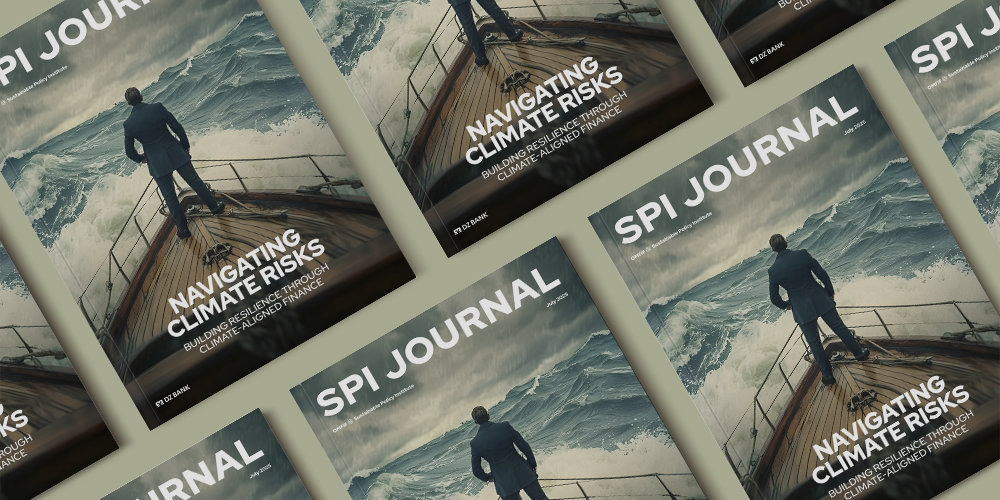Climate-related risks continue to be incompletely understood by the financial sector. Much of this risk arises from the nature-focused impacts of climate change – biodiversity loss, extreme weather and ecosystem disruption – and is emphasised as the global economy approaches a new era of opportunity in transition finance.
To explore this further, July’s edition of OMFIF’s Sustainable Policy Institute Journal examines the way climate risk is being approached by the financial sector including the relationship between opportunities and challenges posed by the transition, the importance of nature risk and current trends with scenario modelling. It features key insights from public investors, fund managers, multilateral institutions and central banks.
Climate shocks, stemming from physical and transition risk, could combine with financial vulnerability and lead to immeasurable financial loss, writes Paul Hiebert from the European Central Bank, while Linda-Eling Lee from MSCI Sustainability Institute explores some of the worst-case physical risks.
Financial institutions have an important role in addressing climate-related risk but face specific challenges in the accuracy of determining climate impacts as regulatory expectations rise. For Udaibir Das, National Council of Applied Economic Research, the most serious constraint on climate finance as it relates to developing countries today is not simply a shortage of capital, but a persistent mismatch between how finance is structured and how climate action is pursued. In response, David Carlin, D. A. Carlin and Company, states that this is an age of recalibration for sustainability regulations and that firms should take the time to prepare for changes.
Despite these challenges, there are options available to financial institutions to support the transition. Isabela Ribeiro Damaso Maia of Banco Central do Brasil highlights some of these that fall within central bank mandates, including adjusting regulatory frameworks, more comprehensive data collection and stress testing. For William Attwell at Sustainable Fitch, most banks still have a long way to go to provide comprehensive climate-related information increasingly expected by market stakeholders and supervisors.
Determining the financial impacts of climate change continues to rely on a broader understanding of environmental tipping points. Sharon Asaf and Sebastian Werner at Citi consider the relationship between scientific and financial modelling, emphasising that limitations in scientific models lead to struggles to precisely replicate climate impacts, particularly in the short term.
However, understanding nature risk and environmental tipping points extends beyond scenario modelling. Lydia Marsden from University College London emphasises that policy-makers need to better understand nature risk and that ecosystem tipping points have far-reaching implications across regions and sectors. Reinforcing this, Marcus Pratsch from DZ BANK, writes that nature-positive solutions must remain central to the net-zero transition as the importance of biodiversity in capital markets is increased.
Ultimately, the financial sector is responsible for turning away from nature-negative flows towards activities that mitigate climate change and build resilience, argue Sem Housen and Emily Dahl from the United Nations Environment Programme Finance Initiative.
Understanding the risk associated with environmental impacts, particularly as the financial industry transitions to net zero, will remain essential to easing stress on the global financial system.
Isabella Frymoyer is Programme Coordinator, Sustainable Policy Institute at OMFIF.
Interested in this topic? Subscribe to OMFIF’s newsletter for more.

